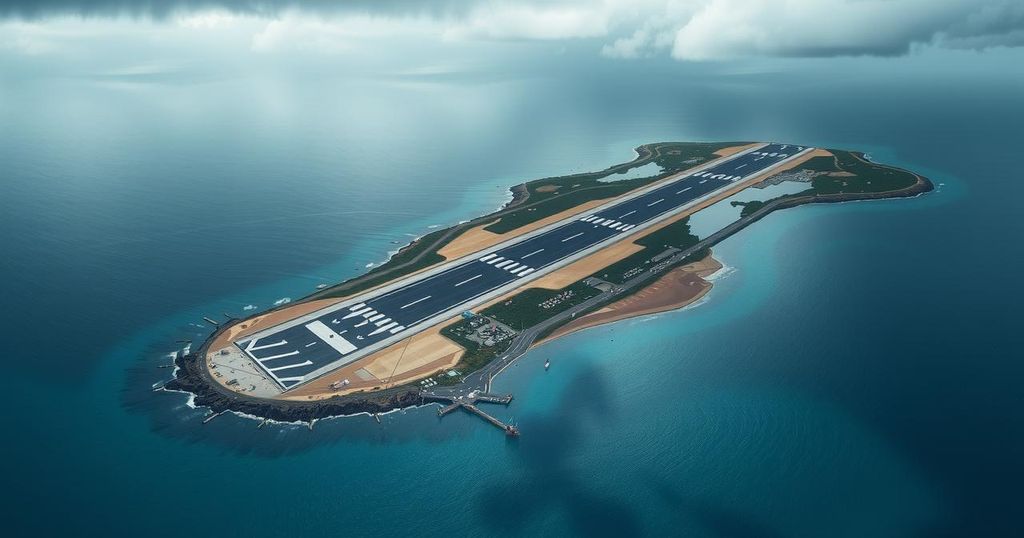U.S. Airstrikes Intensify Against Houthi Positions in Yemen
The U.S. has launched new airstrikes on Houthi targets in Yemen, marking a significant escalation in military operations. With at least one civilian fatality, these strikes aim to dismantle Houthi infrastructure and strongholds. The recent actions underline the evolving conflict dynamics in Yemen and their implications for regional stability and international interests.
The United States has commenced a new series of airstrikes targeting Houthi-controlled territories in Yemen, resulting in at least one fatality and several injuries. This action signifies an expansive military campaign under President Trump aimed at dismantling key rebel infrastructure. A recently identified operational airstrip on a strategic island adjacent to the Red Sea further underscores the evolving complexities of the conflict.
The recent airstrikes, including confirmed strikes in Sanaa, al-Jawf, and Saada, have raised significant concerns. According to the Houthis’ SABA news agency, the strikes led to at least one civilian death and multiple injuries. Surveillance footage provided by the U.S. Central Command depicts bomb strikes on critical Houthi military command sites, though rebel authorities have not officially recognized the hits.
Moreover, the U.S. campaign has broadened, extending its reach beyond military launch sites to include high-ranking personnel and pivotal communication infrastructure. Such targets aim to undermine the Houthis’ media capabilities, essential for influencing public perception amidst the ongoing conflict that has severely impacted the region’s stability.
An analysis by the Associated Press suggests that the recent U.S. actions represent a significant escalation from the previous Biden administration’s more restrained approach. This shift in military strategy is in response to escalating threats from the Houthis against “Israeli-linked” vessels, leading to a marked increase in hostilities, including targeted attacks on maritime assets.
In light of the changing dynamics, the U.S. has heightened its military presence in the region, deploying B-2 stealth bombers and reinforcing naval assets. The positioning of France’s Charles de Gaulle aircraft carrier in Djibouti reflects international re-evaluations of military strategies in response to Houthi provocations.
Reports indicate that an operational airstrip on Mayun Island has come to fruition, reinforcing the strategic significance of this location in the Bab el-Mandeb Strait. This development signals possible long-term intentions by the UAE to assert control over vital maritime routes.
The ongoing conflict in Yemen not only jeopardizes the nation’s stability but also has substantial global implications, perpetuating one of the worst humanitarian crises in the region. The U.S. maintains that its military operations aim to curtail Houthi aggression, yet the group’s assertiveness raises questions about future peace negotiations, complicating the path toward resolution in this enduring crisis.
In summary, the recent escalation of U.S. airstrikes against Houthi targets in Yemen signifies a considerable shift in military strategy under the Trump administration. With civilian casualties reported and critical infrastructure struck, the conflict dynamic is evolving, implicating broader geopolitical concerns. The establishment of an active airstrip on Mayun Island illustrates the increasing regional complexities, as both Houthi threats and U.S. military responses shape the ongoing narrative of the conflict and its international repercussions.
Original Source: www.newslooks.com








Post Comment